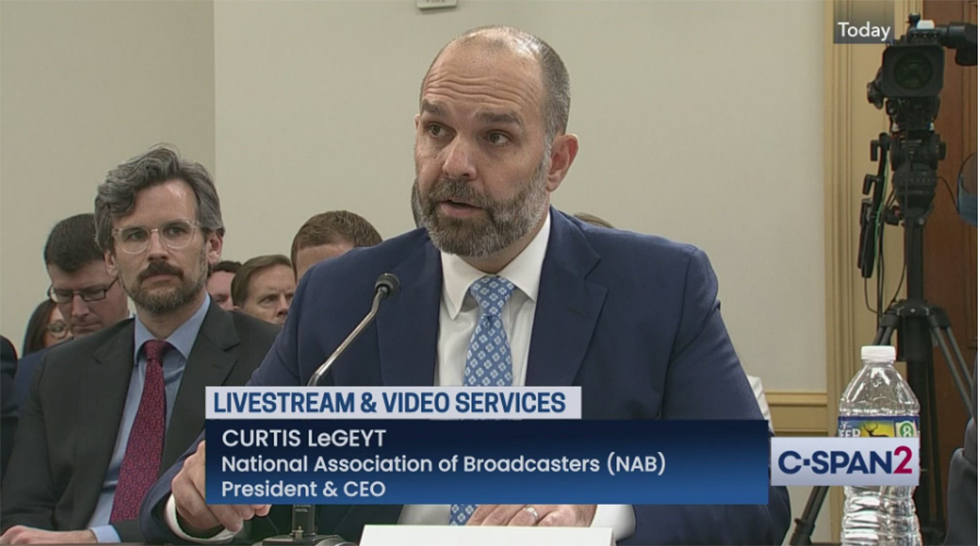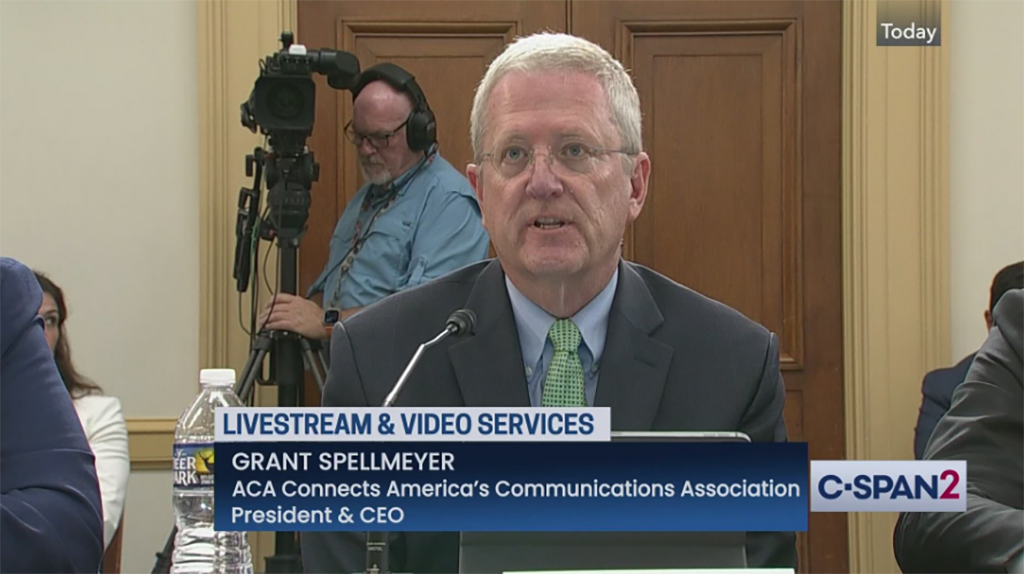Congress Gets an Earful on Over-the-Top Video Threat
NAB, ACA Connects agree on the need for a level playing field, but not on how to get there

If cable and broadcast executives are right, absent some government action to level the playing field, their traditional video businesses are in danger of being steamrolled out of existence by the juggernaut of online streaming, news aggregation and virtual MVPDs.
Against the backdrop of dual writers and actors strikes and union attacks on big studios as unregulated distribution monopolists, the heads of the National Association of Broadcasters and ACA Connects, which represents smaller and midsized independent cable and broadband companies, testified before the House Energy & Commerce Committee on the state of the video marketplace on Thursday (September 14).
The hearing, dubbed "Lights, Camera, Subscriptions: State of the Video Marketplace,” tacked a range of issues from retrans blackouts to the artificial intelligence-driven costs of protecting the integrity of local news and information in a world of easily manipulated misinformation, to the threat to traditional business models by new ones.
In his testimony, NAB president and CEO Curtis LeGeyt said that Big Tech’s “market power and largely unregulated practices in both the marketplace for digital advertising and as gatekeepers to digital content” have diverted ad dollars away from free, ad-supported broadcast video, which is also devalued when it is appropriated online.
LeGeyt slammed streaming services as loss leaders propped up with Big Tech money.

With ad dollars being drained away, broadcasters must increasingly depend on retransmission consent revenues from traditional, facilities-based multichannel video programming distributors to support vital local news, but those MVPDs are a dwindling revenue base themselves, a point made by ACA Connects president and CEO Grant Spellmeyer.
Spellmeyer pointed out at the hearing that some of his members have exited the traditional regulated cable video business, while other smaller operators have closed up shop altogether after cable video became unprofitable, which he ascribed in part to pay video financing the broadcast video sector (via retransmission consent payments).
Multichannel Newsletter
The smarter way to stay on top of the multichannel video marketplace. Sign up below.
LeGeyt said that, given that defection due to unregulated online video, the FCC needs to at least look at whether virtual MVPDs should have to pay retrans fees, something Spellmeyer and ACA Connects definitely don’t support.
LeGeyt agreed that a level playing field with Big Tech was a must, but through antitrust oversight. Keeping Big Tech from getting too big is definitely on Congress’s agenda.
Contributing editor John Eggerton has been an editor and/or writer on media regulation, legislation and policy for over four decades, including covering the FCC, FTC, Congress, the major media trade associations, and the federal courts. In addition to Multichannel News and Broadcasting + Cable, his work has appeared in Radio World, TV Technology, TV Fax, This Week in Consumer Electronics, Variety and the Encyclopedia Britannica.

